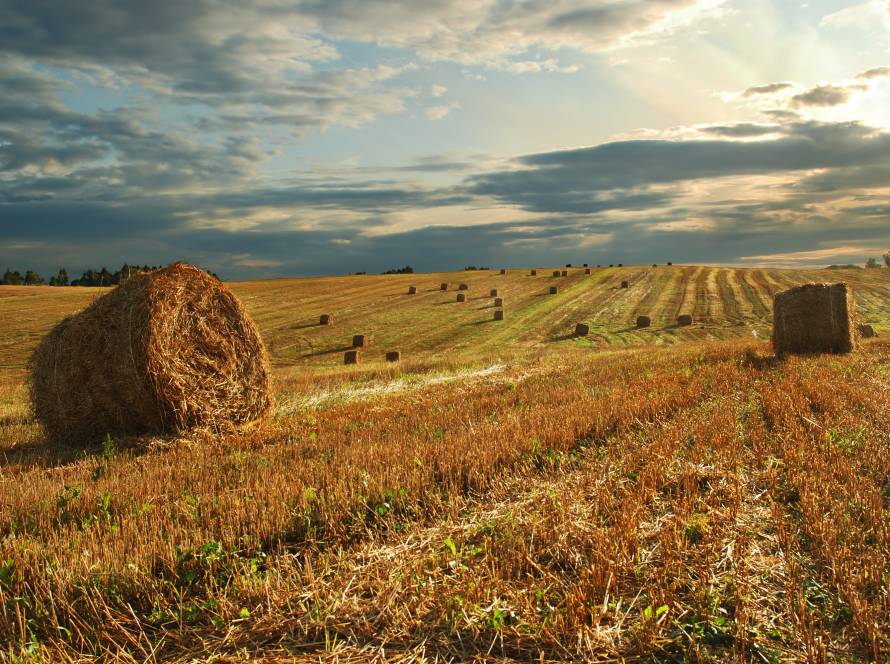Agriculture is one of the most important turning points in human history, enabling communities to transition from nomadic hunter-gatherer lifestyles to settled life. The agricultural revolution, which began around 10,000 BC, allowed people to grow plants and domesticate animals to begin food production, which led to an increase in population, the establishment of settlements, and the emergence of civilizations. Agriculture has shaped social structures, economies, and cultures; it has also initiated a radical change in the relationship between humans and nature.
However, challenges such as increasing population, climate change, water scarcity, and limited agricultural lands challenge the agricultural sector. In this context, future agricultural techniques aim to offer innovative solutions to both increase sustainability and maximize productivity. In this article, we will examine some of the techniques envisioned for future agriculture and how they can shape the agricultural sector.
1. Vertical Farming: Sustainable Production in Cities
Vertical farming stands out as an important solution, especially today, when urbanization is rapidly increasing and agricultural land is decreasing. This technique allows plants to be grown vertically in multi-story structures, thus minimizing the need for agricultural land and increasing productivity. Vertical farming can reduce water consumption by up to 90% and provide energy efficiency. It also significantly reduces the carbon footprint of food farming by offering local production.
2. Precision Farming: Smarter Farming with Data and Technology
Precision farming combines data collection, analysis and application techniques to optimize agricultural processes. Thanks to technologies such as GPS, drones, sensors and artificial intelligence, farmers can monitor and manage every square centimeter of their fields. In this way, the use of water, fertilizer and pesticides is optimized, both environmental impacts are reduced and production costs are reduced. In the future, precision farming is expected to become more widespread and technologies that enable farmers to make data-based decisions are expected to develop.
3. GMOs and Biotechnology: Climate-Resilient Crops
GMOs (Genetically Modified Organisms) and biotechnology will continue to play an important role in the agriculture of the future. Scientists are using genetic engineering techniques to develop plants that are more resistant to climate change, diseases, and pests. This allows plants that need less water, can grow in salty soils, or require fewer pesticides. Although the ethical and environmental aspects of GMOs and biotechnology continue to be debated, these technologies have great potential to increase agricultural sustainability.
4. Robotics and Automation: The Future of Agriculture
Robotics and automation technologies in agriculture offer a great opportunity to address labor shortages and increase productivity. Automatic tractors, harvesters, and agricultural robots can perform agricultural activities without human intervention. These technologies make agricultural operations faster and more precise, while minimizing human error. In the future, the widespread and accessible use of such robotic systems could revolutionize the agricultural sector.
5. Hydroponics and Aquaponics: The Rise of Soilless Agriculture
Hydroponics and aquaponics are methods of growing plants using water instead of soil. In hydroponic systems, plants grow in a nutrient-rich water solution, while aquaponics integrate fish farming, enabling cyclical use of water. These systems reduce water consumption, provide faster growth and higher yields. Especially in regions where water resources are limited, these methods can become an indispensable part of sustainable agriculture.
6. Artificial Intelligence and Machine Learning: The New Intelligence of Agriculture
Artificial intelligence (AI) and machine learning play a key role in the future of agriculture. These technologies increase agricultural productivity by enabling big data analysis, predictive modeling, and automated decision-making processes. For example, AI can optimize critical decisions such as planting and harvesting timing by analyzing weather data, soil data, and crop growth patterns. In addition, the use of AI is also becoming widespread in areas such as early pest detection and disease management.
7. Environmental and Social Sustainability: Balance in Future Agriculture
The agriculture of the future will not only consist of technology-based solutions; it will also focus on environmental and social sustainability. Minimizing the impact of agricultural practices on the ecosystem and improving the well-being of communities will be one of the cornerstones of future agricultural policies. Approaches such as organic agriculture, local production and consumption cycles, fair trade practices and community-supported agriculture will be indispensable elements of the sustainable agriculture of the future.
Sustainable and Innovative Solutions
The future of agricultural techniques will be shaped around sustainability and innovation. Many innovative solutions, from vertical farming to precision farming, from biotechnology to robotic systems, have the potential to transform the agricultural sector. The widespread use of these techniques will make agricultural production more efficient, environmentally friendly and sustainable, while also playing a critical role in meeting the world’s increasing food needs. As the future of agriculture takes shape at the intersection of innovation and sustainability, the adoption of these techniques will be an important step towards creating a healthier, safer and fairer food system for both farmers and consumers.





